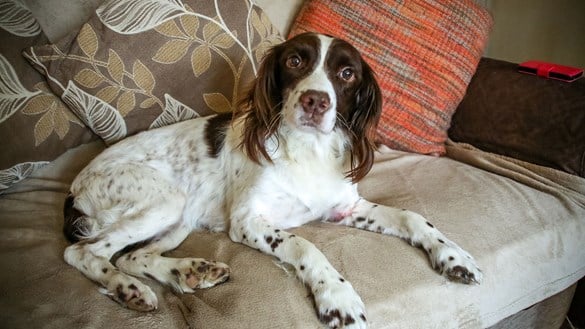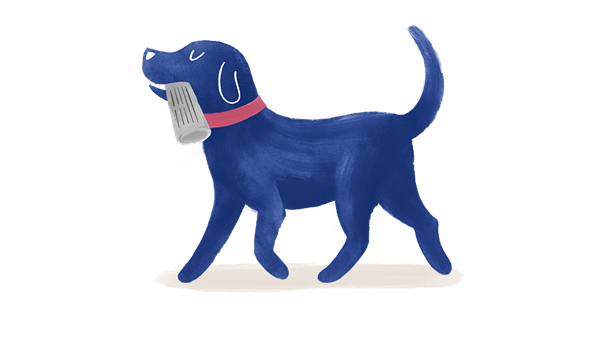World First as Pioneering Fish Skin Graft Saves Thirsk Dog
A dog suffering from a seriously infected wound and days from death has been saved by pioneering veterinary surgery involving a fish skin graft.

The veterinary team at Medivet 24 Hour Thirsk, James Herriot’s (Alf Wight’s) former practice, used the fish skin as a ‘biological bandage’ to help the wound to heal and to regenerate skin around the dog’s elbow which the infection had destroyed.
The surgery - the first time this technique has been used on a dog – saved the life of a five-year old spaniel called Gigha, whose owner Mrs Taylor lives in Thirsk. The dog has now made a full recovery.
Gigha’s surgery was carried out by Dr Guy Killick, who explained: “Gigha fell into a drainage ditch and this caused a tiny cut on her elbow. The initial wound did not seem severe, however, despite intensive decontamination and treatment with antibiotics, the wound was infected, causing a significant loss of skin from the elbow. Gigha was hospitalised and was at significant risk of septicaemia.”
He continued: “We managed her wound in hospital for four days with daily dressing changes and an irrigation device to provide local anaesthesia and the delivery of antibiotics. Unfortunately, skin grafting in her case was not suitable given the infection and a lack of sufficient loose skin to donate.
“Surgery using Tilapia fish skin grafts was pioneered at UC Davis in the USA and was used successfully on a horse with acid burns in the UK last year. It is still very rare, however, and had not been used to treat an infected wound before. Nor had it been used on a dog. Having done our research, we felt it was an appropriate treatment for Gigha and carried out the surgery a week after the initial wound.”
According to Dr Killick, the surgery was straightforward and involved simply tacking the fish skin in place. A further graft was then placed which remained for a further two weeks until the wound was 50% of its initial size.
A few months on, Gigha has made a full recovery and the wound has healed completely.
Guy Killick added: “Given the large wound area and risk of further infection we decided on this novel approach to improve the quality of life for the patient while the wound was healing. While we were naturally apprehensive of making the first attempt at this potentially revolutionary technique, what we knew about fish skin grafts suggested that they could work in her case so we were determined to give it a try.
“Looking at her now, you wouldn’t believe that she’d been days from death just a few months ago. We hope her story and her recovery will be useful to colleagues treating dogs with similar wounds in the future and are happy to discuss the case with them if this would be helpful.”
“I would also like to thank Dr Jamie Peyton, Chief of Integrative Medicine Service at UC Davis. for her invaluable help and advice during this case and her assistance in the use of the Tilapia graft.”



